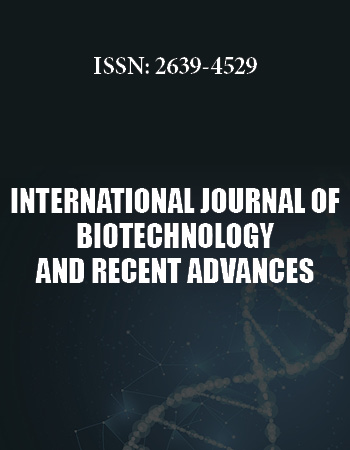International Biotechnology and Research Conference
April 25-27, 2018 Rome, Italy
Effect of Porphyrinoids on the Infectivity of Nosema spp.Microsporidia
1Department of Industrial Microbiology, Faculty of Biology and Biotechnology, Maria Curie-Skłodowska University, Poland
2Institute of Biological Basis of Animal Production, Faculty of Biology, Animal Sciences and Bioeconomy, University of Life Sciences in Lublin, Poland
3Department of Botany and Mycology, Faculty of Biology and Biotechnology, Maria Curie-Skłodowska University, Poland
4Institute of Organic Chemistry, Polish Academy of Sciences, Poland
Pathogenic fungi from the phylum Microsporidia are intracellular parasites found in both invertebrates and vertebrates. Nosema apis and N.ceranae are particularly devastating to honeybees (Apis mellifera carnica) as they complete their life cycle in the insectsʼ intestinal tract, causing total colony collapse. In the present work, protoporphyrin amide derivatives [PPIX (Lys)2, PPIX(Asp)2, PPIX(Lys-Lys)2] and porphyrins H2TTMePP and H2TmePyP were studied for their bioactivity against microsporidia isolated from dead honeybees. The microsporidia were treated in vitro with aporphyrin before they were usedto infect the honeybees. The Nosema spp. spores were isolated from winter beehive debris, purified, and incubated in a 0.5% sucrose solution (2 × 10-7 spores/mL) with one of the five porphyrins (100 µM)in the dark on a shaker at 30°Cfor 24 h. A control experiment without aporphyrin was performed simultaneously. Next, the spores were centrifuged, washed with sterile solutions of 0.9% NaCl and 0.5% sucrose to remove porphyrins, and used to infect honeybees. Differences in the infectivity of pretreated and untreated spores were determined in vivo by measuring the number of spores developed in living honeybees on the 7th, 12th and 20th day of the cage test experiment. Microsporidia preincubated with the porphyrins showed a lower infectivity. The largest differences were observed on days 12 and 20. The level of infection in bees infected with porphyrin-treated spores was 2-fold lower than in the control, and in the case of PP (Lys-Lys)2, even 3.3-fold lower. At the same time, lower bee mortality (up to 50 %) was observed compared to the control group. Morphological changes and deformations of the cell wall of the microsporidia treated with porphyrins were observed by light and scanning electron microscopy (SEM). Inactivation of Nosema spp. spores with porphyrins reduces their ability to infect honeybees and develop in their intestines, thus diminishing bee mortality. This work was financially supported by the National Science Centre, Poland (2015/17/B/NZ9/03607).
Biography:
Dr. Mariusz Trytek is Assistant Professor at the Department of Industrial Microbiology, the Faculty of Biology and Biotechnology of Maria Curie-Skłodowska University in Lublin, Poland. He received his M.S. degree in organic chemistry in 2000 and earneda PhD in biological sciences in 2007 from MCSU, with which he has been affiliated as a researcher and a lecturer for 16 years now. Dr. Trytek has supervised several bachelor and master theses. His current research interests include biomimetic catalysis with porphyrins, biotransformation of organic compounds, and biomedical applications of porphyrinoid compounds. He has co-authored over30 publications (including research papers, reviews, and book chapters), and four patents. He is currently the principal investigatorin the national project “The biological activity of porphyrinoids and mechanisms of their action against intracellular bee pathogens of the genus Nosema”, 2016-2019.


